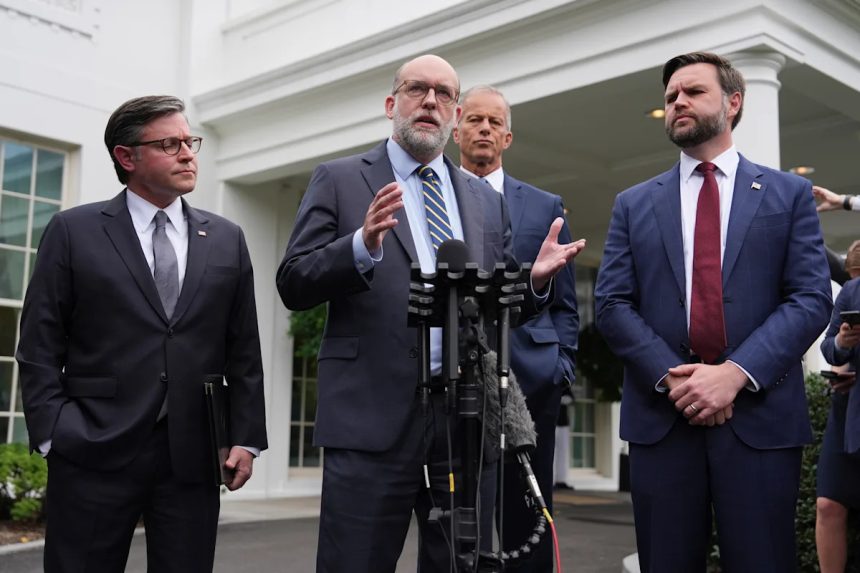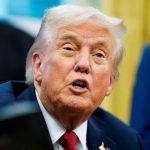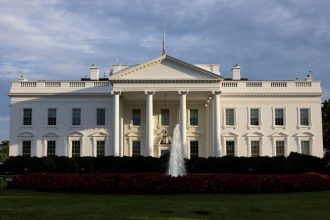In the first hours of the shutdown, President Donald Trump has taken a scalpel to federal projects backed by Democrats.
But so far, he has held back from unleashing a wrecking ball across the federal government, underscoring the political tightrope he’s walking in the first funding lapse of his second term: How to wreak maximum pain on Democrats without angering Republican allies.
White House allies say these narrow moves fall short of the kind of sweeping cuts to the federal workforce and spending that budget director Russ Vought has long promised and instead reflect a growing view among some Republicans that policy decisions the administration makes during the shutdown could come back to bite them.
“Going after the climate spending and trimming the bureaucracy are safe bets,” said one person close to the White House, granted anonymity to speak candidly.
“There are some Senate Republicans that will scream but at the end of the day they have all campaigned against this stuff,” the person added.
Trump, in a social media post on Thursday, pledged to follow through on Vought’s promise to fire staff in “Democrat agencies.” He didn’t elaborate, but small independent agencies that have long been in the White House’s crosshairs are the expected targets. Press secretary Karoline Leavitt said the layoffs would be in the “thousands.”
At the same time, the White House is balancing making the shutdown as painful for Democrats and their constituents as possible without making more sweeping cuts to more popular and well-known programs that risk provoking ire from congressional Republicans and MAGA voters. Republicans, including Senate Majority Leader John Thune, have already signaled discomfort with the ramifications of more sweeping cuts from Vought and face the prospect of additional funding votes as soon as Friday.
And narrowly targeting workforce reductions at smaller, independent agencies also allows the administration to punish Democrats without ticking off Cabinet members, many of whom felt that former Department of Government Efficiency head Elon Musk’s cuts earlier this year were already too heavy handed.
“This is one of the advantages of having four years in the wilderness to think about all this,” said former House Speaker Newt Gingrich. “They will be very methodical in singling out the things liberals love most and maximizing changes in a way that we’ll see how many days the left can take that. I’m sure this is going to be a steady campaign.”
The actions come amid a coordinated messaging push from the White House and congressional Republicans placing the blame for the shutdown squarely on Democrats, who refused to vote for what the White House called a “clean” funding bill unless their GOP counterparts agreed to extend certain Obamacare subsidies. Republicans oppose such a move because they argue the Biden administration expanded the pool of “lawfully present” immigrants who had access to those subsidies.
Since the government shutdown began early Wednesday, the White House defunded the Council of the Inspectors General on Integrity and Efficiency, an umbrella group that provides training, peer reviews and cross-agency oversight work for inspectors general. It also abruptly fired a large number of people advising the National Endowment for the Humanities, retaining only four Trump appointees. The cuts are unlikely to inspire significant pushback from Republicans.Despite the focus on small agencies, an OMB official, granted anonymity to discuss private plans, declined to rule out significant cuts and stressed that everything is on the table — including cutting the federal workforce in Cabinet-level agencies. The person also noted that all 200-odd agencies had to submit reduction-in-force plans in addition to posting shutdown plans on their website.
On the shutdown’s first day, the White House aimed at exacting pain on Democrats, including canceling climate funding to mostly blue states and withholding billions of dollars from New York City infrastructure projects — cuts aimed squarely at the home state of Senate Minority Leader Chuck Schumer and House Minority Leader Hakeem Jeffries.
So far, polling shows that the White House has succeeded in muddying the waters on who’s to blame for the shutdown, with a significant share blaming Democrats or having mixed feelings despite Republicans’ unified control of Congress and the White House. But unpopular and sweeping layoffs threaten to shift the narrative in the other direction and place more of the blame for the shutdown’s consequences on Republicans.
Some administration allies still see threats of sweeping federal layoffs primarily as bluffs to get Democrats to back down and support passage of the budget resolution.
“It seems like the president might be slightly more tepid in blowing too much up — or appreciating the bombastic, threatening narratives more than the actual execution,” said a first-term Trump official granted anonymity to describe the sensitive dynamics. “The White House knows that regardless of who takes the blame for a shutdown, this could have ill-timed economic consequences that Trump ultimately has to own. That’s definitely on their minds.”
Leavitt on Thursday said the president was focused on “agencies that don’t align with the administration’s values” and are a “waste of taxpayer dollars.” Both Leavitt and another White House official, granted anonymity to speak about internal thinking, emphasized that these conversations are only happening because Democrats decided to vote against the funding bill.
“The Democrats could reopen the government at any time,” the official said. “The conversations we’re having about staffing and potential actions the administration might need to take are only due to the Democrat shutdown.”
But the White House’s actions are causing Republicans some headaches.
Rep. Mike Lawler (R-N.Y.) criticized the decision to hold up major transportation projects in his state, and fellow Republican Reps. Blake Moore of Utah and Brian Babin of Texas raised concerns about potential mass layoffs with Vought.
“There’ll be impacts to blue states that maybe the administration will talk about publicly, like, ‘look at what the damage this is causing to your community,’” said an administration official granted anonymity to speak candidly. “But chances are that same thing is happening to a red state.”
The Trump administration is also trying to make sure that the planned firings in small agencies hold up in court. The Office of Personnel Management convened a call with small agencies on Monday morning and provided guidance for agency reductions in force. OPM Senior Adviser Noah Peters instructed agencies to spell out in their memos that RIFs were agencies’ decisions, not the president’s nor the administration’s according to a federal employee on the call, granted anonymity to describe it. The person added that these specifics were important to include for judicial review. Yet on the same call, when agencies asked if they have to draft another RIF plan if they have already done reductions or if they already have upcoming reductions scheduled, the answer was yes.
Trump laid the groundwork for the targeting of independent agencies earlier this year via an executive order granting the president greater authority over agencies that have been allowed to “operate with minimal Presidential supervision.”
In the spring, a small DOGE cadre based at the General Services administration moved throughsome of the historically independent corners of the federal government with uncanny speed, executing a nearly identical sequence of actions to hollow out agencies including the National Endowment for the Humanities, United States Institute of Peace and the U.S. Agency for Global Media.
But it’s unclear how many more cuts to federal staffing Vought can realistically make. Agency-wide reductions, including at the Health and Human Services and Education departments, earlier this year resulted in such significant workforce shortages that the departments had to eventually reinstate staff. Other workers were ordered to be reinstated by the courts.
Carmen Paun contributed reporting.








